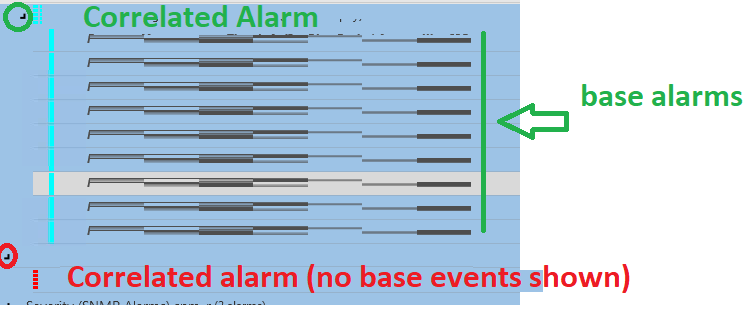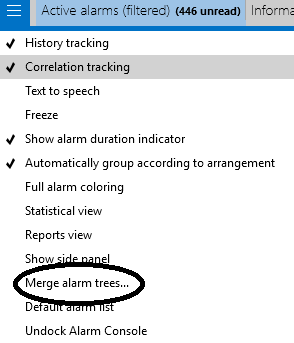Hi Dojo,
When aggregating multiple base events into a correlated alarm, which settings can be used to have
only one row in alarm console (= the correlated alarm) that can be manually expanded by operators
to see the different base events aggregated?
Desired behaviour in green in the following screenshot:

Currently checking the differences between “Correlation Tracking” (or other options) in Console

& “Limit Base Alarms” in the correlation configuration:
Any steer will be helpful.
PS: Am I wrong or was there a separate feature some time ago named “aggregation”? Was that for Alarms or something else in a “mediation” layer?
Hi Alberto,
“Correlation Tracking” is what you’re looking for. This is a client-side setting to display correlation base alarm events under the correlated alarm event (hiding them until the correlated alarm event gets expanded by the user).
“Merge Alarm Trees” is a client-side feature to group together different alarm trees for the same parameter or table cell into one visual tree. (collapsible).
“Limit Base Alarms” is a server side rule-level option for correlation rules to further limit the base alarm events that get linked to a correlation alarm. For example, consider a rule which filters on all alarm events for a certain element (maintaining active tree status) and triggers when “count(*) > 10”. An extra base alarm filter could be configured here to only include critical alarm trees as base events for the generated correlation alarm. When expanding the correlated alarm in the alarm console, only critical alarms will show up beneath. Even though 10+ alarm trees were involved in triggering the rule. (the other alarm trees will still show up in the alarm console)
Aggregation rules are available from View cards in DataMiner Cube and allow to set up rules that aggregate parameter data across multiple elements and provides alarm/trend templates on top of these aggregated values.
The Mediation layer provides support for accessing similar parameters from different connectors in the same way. It provides an abstract layer through which a parameter value can be retrieved from a type of device without knowing the exact type of connector that implements it.
Hope this helps!
Thanks for explaining in detail all the different cases, Wouter – this goes straight to my browser “favourites”, whenever I need a recap 😉